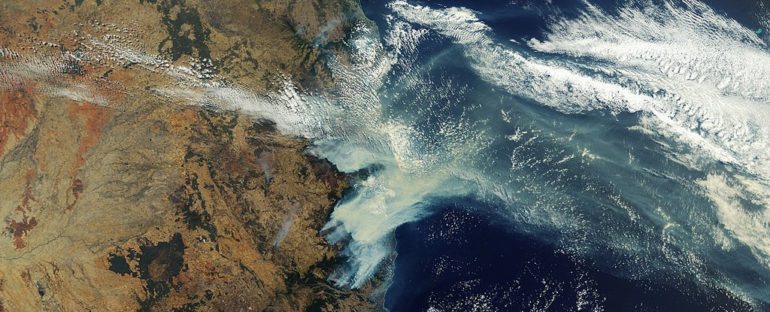The bushfires that ravaged Australia between 2019 and 2020 were so huge that they spewed as much smoke into the stratosphere as a large volcanic eruption, with serious consequences for the environment, according to a study published Thursday in the journal Science.
The stratosphere is the second layer of the atmosphere, right above the troposphere – where we live.
“For us, it was a huge surprise” to see such a significant effect, study co-author Ilan Koren, a professor at the Weizmann Institute of Science in Israel, told AFP.
“I never saw such an injection (of smoke) to the stratosphere,” he said.
The amount of smoke released into the atmosphere by the fires is comparable to that put out by the eruption of Mount Pinatubo in the Philippines in 1991, which was the second-largest of the 20th century.
Researchers noted that the smoke drifted away from Australia to the east, and then returned again from the west two weeks later.
“We could see the smoke completing a whole circulation in two weeks,” Koren said. “I never saw such a strong event spread so fast.”
The phenomenon can be explained by three factors, according to the study.
First, the fires themselves were intense.
Second, they occurred in an area of far southern Australia where the distance between the troposphere and the stratosphere is smaller than elsewhere.
And lastly, the fires took place near strong storms, which helped draw the smoke up higher into the atmosphere.
The fact that the smoke was able to billow so high is crucial to understanding its environmental impact: Usually, such smoke might only stay in the lower part of the atmosphere for a few days or weeks.
“But once it gets to the stratosphere, it stays between months to years,” Koren explained.
The winds are stronger up there, allowing the smoke to be dispersed farther and faster than might otherwise be possible.
“Basically what we get is a very thin smoke blanket that covers the whole hemisphere for many months,” Koren said.
‘Not clear yet’
Researchers could see the smoke in the stratosphere for six months, from January to July 2020, via satellite monitoring.
Eventually, it became too difficult to separate the smoke from the Australian bushfires from smoke in the stratosphere that might have come from other sources.
“But most likely there is still today a signature of the smoke in the stratosphere,” Koren said.
The main effect of the smoke staying in the atmosphere for so long is that it can reflect radiation coming from the sun.
According to Koren, that “definitely has a cooling effect overall,” especially on the ocean, potentially disrupting processes such as algae photosynthesis in the southern hemisphere.
The smoke can also absorb solar radiation, which can have a localized warming effect.
“The consequences of the warming of the smoke in the stratosphere are not clear yet,” Koren said.
Agence France-Presse



